If you would have told my younger self that I would be a “scouting” mom I would have told you that you were crazy. As a child, I participated in Girl Scouts some, and while I enjoyed the activities it was never really my thing. Fast forward some 30 years later and here I am, in my sixth year as a Cub Scout parent volunteer with our local pack. My kids have tried several different clubs and activities over the years, but scouts has been one that has been constant since they started elementary school. The skills they’ve learned and the friends they have made have been well worth the time and energy invested.
If you’re like me, with little background in scouting, then the Cub Scout experience can seem daunting. Packs? Dens? Whittling chips? Oh my! I’ve put together an FAQ that can make jumping into scouting a little easier.
A Guide to Cub Scouting in the Iowa City Area
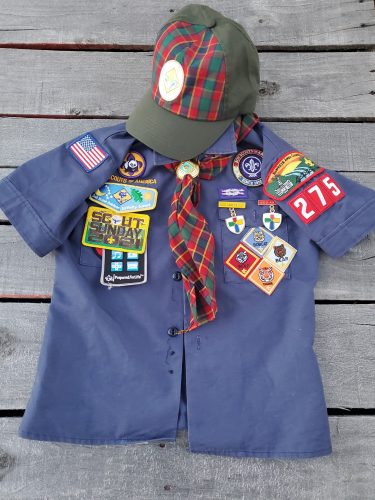
10 Questions You May Have about Cub Scouts
1. What is Cub Scouts?
Cub Scouts is a program for elementary age students, kindergarten through fifth grade. It is a part of the national program “Scouts BSA” (formerly known as Boy Scouts of America). Cub Scouts participate in many age-appropriate activities and learn to live by the values upheld in the Scout Oath and the Scout Law.
2. Who can join Cub Scouts?
Any child who is in kindergarten through fifth grade can join Cub Scouts. Scouts who are in kindergarten or first grade must attend all events with an adult partner.
3. What’s a Pack? What’s a Den? What about those animal names?
Cub Scout organization can seem complicated, but it really isn’t. Cub Scouts includes five levels, each with its own name. These levels are:
- Lion (Kindergarten)
- Tiger (first grade)
- Wolf (second grade)
- Bear (third grade)
- Webelos (fourth grade)
- Arrow of Light (fifth grade).
The names originally came from characters in the Rudyard Kipling book, The Jungle Book. Webelos is actually an acronym for the phrase “We Be Loyal Scouts” and “Arrow of Light” comes from the name of the rank patch that scouts can transfer from their Cub Scout uniform to their Scouts BSA uniform — should they decide to continue in scouting past fifth grade. “The Arrow of Light” is the highest rank award available to Cub Scouts.
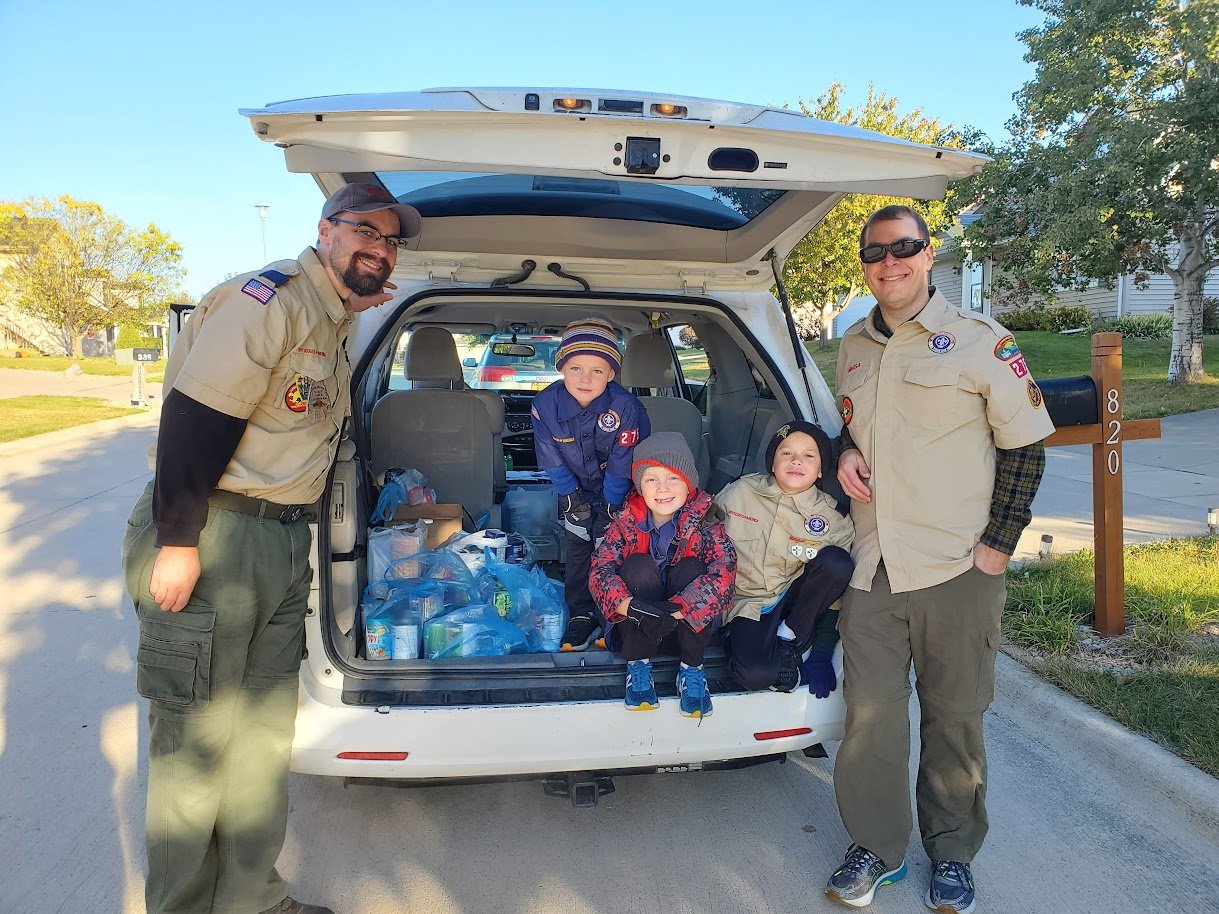
Most scout activities take place within a “den” which is a small group of scouts of the same age and gender. Scouts meet with their den about two times each month to work on activities that will help them earn their new rank. As they complete activities, they will earn belt loops that they can display as evidence of their achievements. The adult in charge of a den is called a “Den Leader.” In some areas you may hear the term “Akela” in reference to a Den Leader. This is another reference to The Jungle Book. An Akela in Scouting is anyone who acts as a leader to youth. A “pack” is made up of all of the dens within a specific Cub Scout group. About once per month, all of the dens come together for a pack meeting with their families to have fun and celebrate achievements. The pack may also organize activities such as family camp outs, Pinewood Derby races, field trips, or service projects. It is organized by a “Cubmaster” and several volunteers who make up the Executive Committee. These individuals are responsible for the activities, finances, and record keeping for the pack.
In terms of larger organization, all of the area packs are organized into specific “Districts” and “Councils.” These paid staff members provide support and training to the volunteers running and organizing the local packs. In this area, all local packs are part of the Hawkeye Area Council. Iowa, Johnson, Washington, and Cedar Counties are part of the Southern Prairie District.
4. I heard Cub Scouts is Co-ed, is that true?
Sort of, but not exactly. Both boys and girls can join Cub Scouts. Packs are allowed to choose whether they will be single gender packs or family packs, involving both boys and girls. For younger scouts (kindergarten through fourth grade) dens may be organized as family dens and include both boys and girls in a single den. Girls and boys in fifth grade must be organized into separate gender specific dens, although they may do activities together in a larger group. Any activity that includes girls must have at least one adult registered female leader present for that activity. There are also very specific rules about camping and overnight activities for gender separation. Scouting magazine recently published this article regarding some of these changes for family den organization.
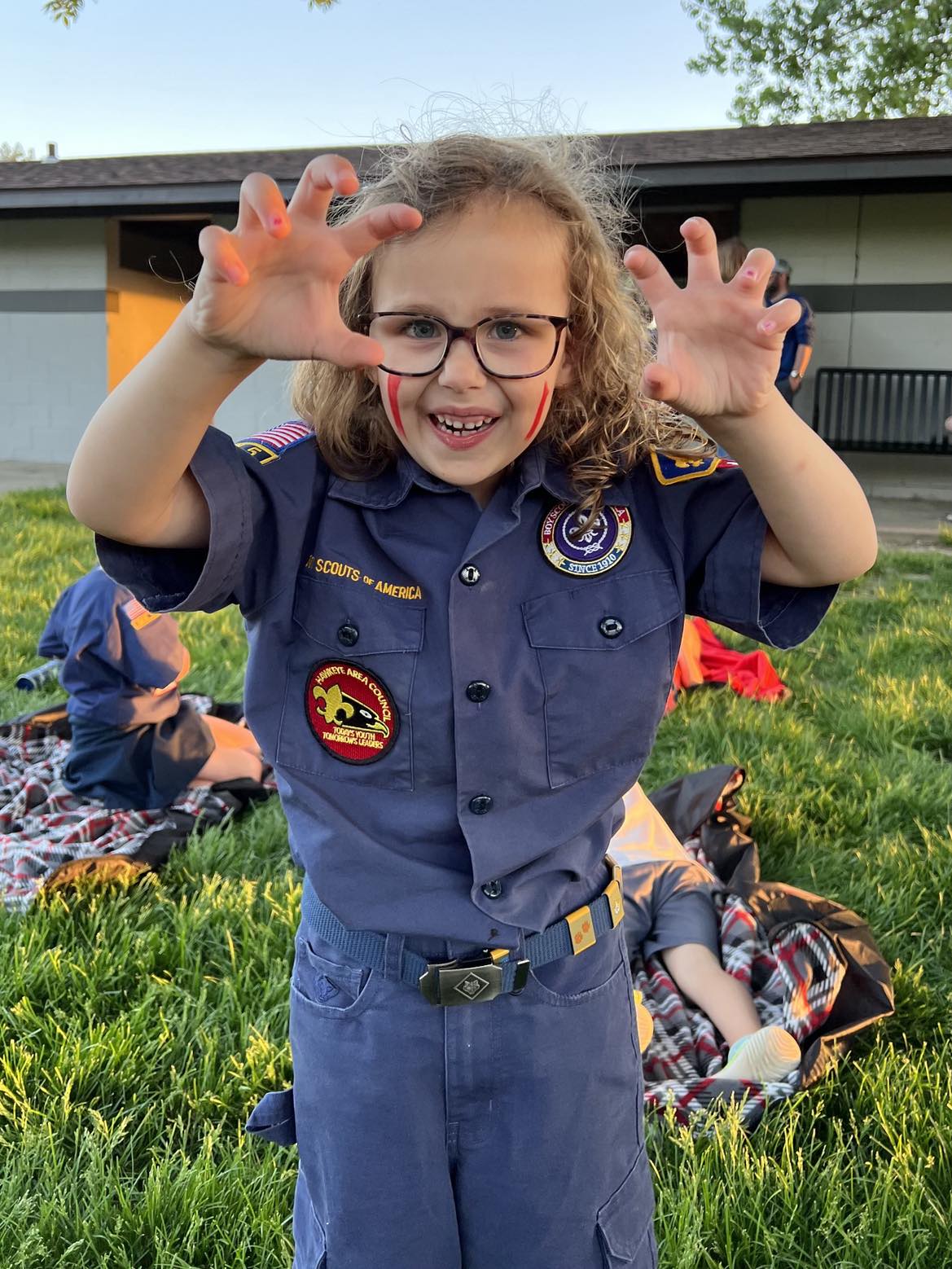
5. What do kids do? What do parents do?
Kids do so many things in Cub Scouts! They may go camping, visit a fire station, do service projects, learn first aid, learn to swim, make music, create art, or learn about other countries and cultures. They might make pinewood derby cars or participate in a “rain gutter regatta.” Older scouts might visit with the mayor, learn outdoor cooking skills, and learn how to safely use pocket knives and build fires. Each level has a set of required adventures to complete, as well as many electives that a scout may choose to complete based on his or her interest. As they complete the adventures along the year they receive belt loops that mark their achievements.

One of the goals of each scouting year is to complete all of the required adventures for the rank so that a scout can advance to the next rank. This usually takes place at a ceremony at the end of the year where the scouts receive a new patch to wear on their uniform. This is a way of recognizing the hard work of the year. However, Cub Scout levels are age based, so even if a scout does not complete the requirement for one level, they can still go forward and start working on the next age appropriate level with their peers.
At the Lion (kindergarten) and Tiger (first grade) level, a parent or other trusted adult must attend all activities with the scout. At the older grade levels a scout may attend activities without a parent. However, parents play an integral part in cub scouting, and your scout will need your help to complete his or her adventures. Parents also serve as volunteers within the den and the pack to organize and lead activities and fundraisers. As with many clubs and organization, the packs and dens are volunteer led and run, with support from the larger organization Scouts BSA.
6. How much does it cost?
Scouting costs will vary by pack. There is an annual fee to register as a scout, and this covers membership into the Scouts BSA as well as insurance during sanctioned events. Some packs will have separate dues to cover pack activities, and some activities and camps will also have costs. Many packs do fundraisers such as popcorn sales or wreath sales that help cover some costs.
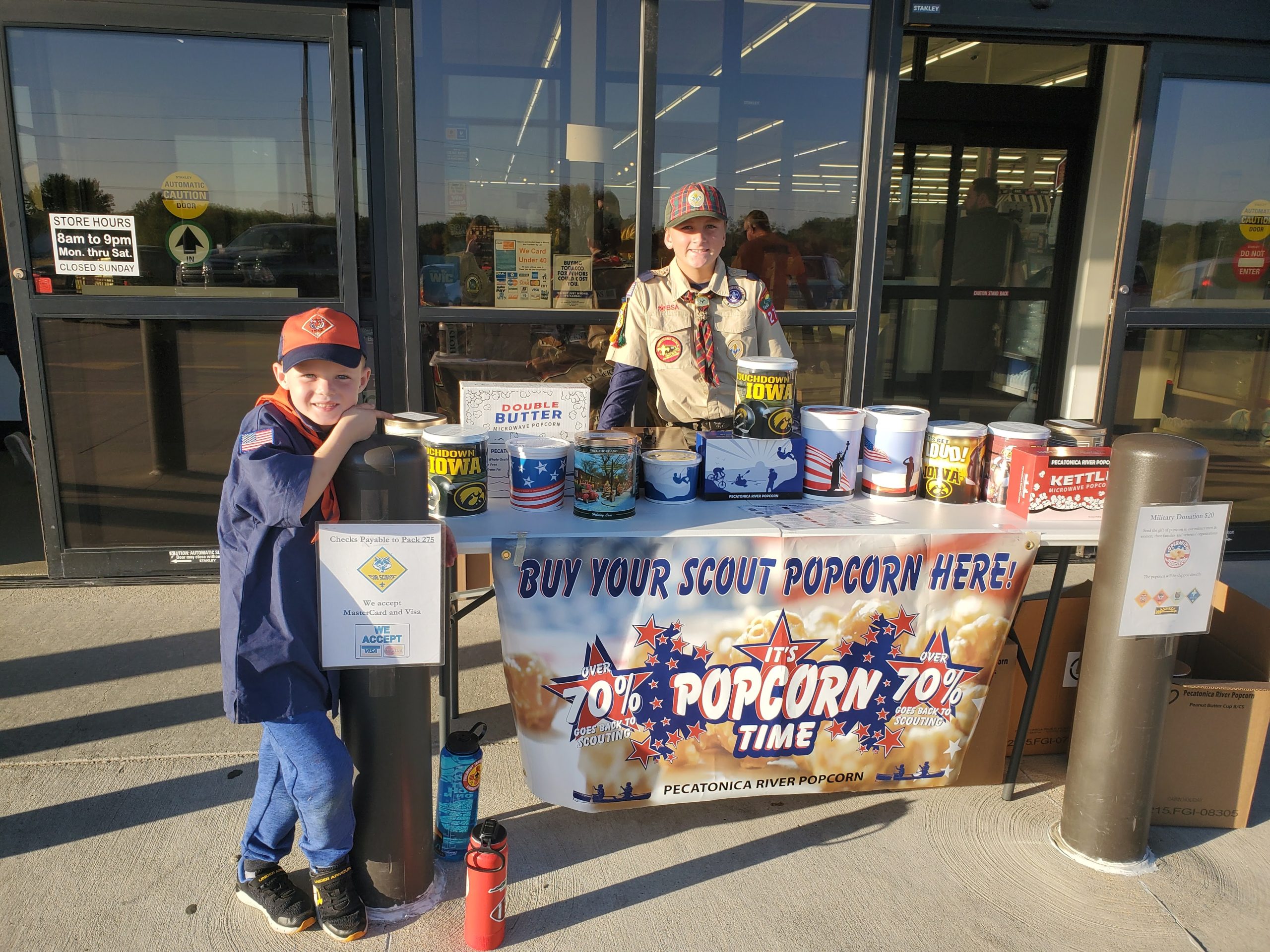
Currently the national fee is approximately $80 per year. There is usually a one time joining fee, that may be covered by the pack, depending on the practices of the individual pack. You can find more information on the Scouts BSA website regarding fees.
7. What do I need to buy?
To start off in Cub Scouts, you will need a uniform shirt, a belt, a hat, a kerchief, and a slider. Your Den Leader or Cubmaster will be able to tell you what specific patches you will need and where they go on the uniform shirt. You will also need the handbook for your level. Many packs have used uniforms available if needed. You can buy uniforms at Fin and Feather in Iowa City, at the Scout Shop in Cedar Rapids, or online. Pro tip — at the Scout Shop in Cedar Rapids they will sew your patches on for a fee!
8. How much time does it take?
Most dens meet for about an hour, about two times per month. There may also be a weekend activity here or there. There is also usually at least one pack meeting per month. However, your scout can also spend more time if they wish working at home or with a friend on elective adventures from the handbook that may not be covered as a group by the den.
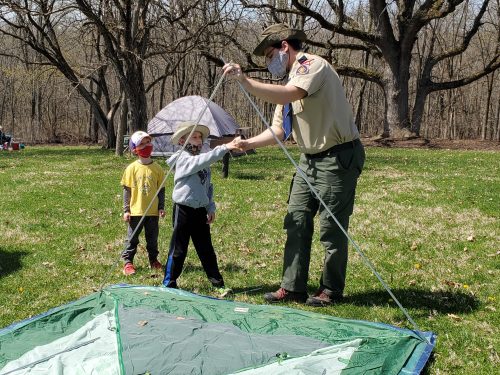
9. Is Scouting safe?
It is no secret that Scouts BSA, as an organization, has had some serious problems. In years past, Cub Scout Packs and Scout Troops became places where adults were able to gain the trust of children and youth and betray that trust by committing acts of abuse. Far too many scouts suffered abuse at the hands of leaders or other scouts in the organization, and too many more adult leaders turned a blind eye to abuses that were occurring in their organizations. In answer to these historic truths, Scouts BSA has instituted rules known as “Scouting’s Barriers to Abuse” that govern all Scouting activities. These rules and changes made to the organization are meant to ensure the safety of all children and adults involved in scouting. Some of the most important elements include:
- Registration and background checks for adult leaders and volunteers: Individuals with a history of abuse against children are not eligible to serve as volunteers or leaders.
- Two-deep leadership: Two registered adult leaders must be present during any scout activity. No one-on-one contact or private interactions are allowed between an adult and child in any manner, at any time, ever. This includes all digital and in person communication. Any emails, text messages, or other forms of digital communication between a scout and a leader must include that scout’s parent and/or another registered adult leader.
- Youth Protection Training for Leaders: All Cub Scout volunteers are encouraged to complete a free online training program which focuses on how to prevent, recognize, and all forms of abuse including sexual abuse. Registered leaders are required to complete the training. The training must be repeated every two years. In 2019, this program was substantially expanded to include anti-bullying training and all registered leaders were required to repeat the program at that time.
- Parent Resources:All Cub Scout parents are provided resources to talk with their children about abuse, in age-appropriate language.
- Expectation of reporting: Any adult leader who witnesses or suspects any abuse has occurred must report this to the appropriate authorities and local scout council. Not doing so is grounds for a volunteer to be removed from membership.
You can read more about Safe Scouting and the Youth Protection program:
10. How does my child sign up? How do I get more information?
The beginning of the school year is a great time to check out Cub Scouts! Many of the elementary schools will have Pack representatives present during the Ice Cream Socials on August 21st. However, it’s never too late to start! It doesn’t matter if your child starts scouting as a kindergartner or as an Arrow of Light. He or she can start at the beginning of the year or midway through. Any time is the right time! The website www.beascout.org is a great place to start for more information.
In the Iowa City area, most of the Cub Scout Packs are arranged according to elementary school. There are local packs in Iowa City, Coralville, Tiffin, Solon, and North Liberty. One pack may include children from several schools. Any child is welcome to join any pack (you don’t have to stay with the one from your school) but many kids like to stay with their friends from school. You can find your local Pack online or can visit the webpage for local packs located in the Iowa City, North Liberty, Coralville, and surrounding areas.
Although I didn’t set out in parenthood expecting to become a scouting mom, I’m glad that I’ve taken this journey. My two boys have had adventures, made friends, gained skills, and fostered character and values with the Cub Scout Program. My oldest has now gone on to Scouts BSA and has a goal of attaining the Eagle Rank. They are setting and reaching goals and having a lot of fun along the way. So if you are looking for a fun family activity, consider scouting. You won’t regret it!










